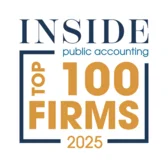The One Big Beautiful Bill Act (OBBBA), enacted on July 4, 2025, makes a significant change to the tax treatment of research and experimental (R&E) expenditures. Reversing a key provision of the 2017 Tax Cuts & Jobs Act (TCJA), the OBBBA reinstates immediate expensing for domestic R&E costs through newly added Internal Revenue Code Section 174A. This change applies to expenditures incurred in tax years beginning after December 31, 2024.
While U.S.-based research regains its favorable treatment, foreign R&E costs remain subject to TCJA’s 15-year amortization, preserving stricter treatment for research activities conducted outside the United States.
Changes to R&E Expensing and the R&D Tax Credit
Beginning with tax years starting after December 31, 2021, the TCJA required taxpayers to capitalize and amortize all R&E expenditures—domestic costs over five years and foreign costs over fifteen years. Under the new rules, taxpayers can fully expense domestic R&E costs in the year incurred for tax years beginning after December 31, 2024.
Taxpayers may adopt immediate expensing by reporting a change in accounting method with their 2025 federal income tax return, or they may continue capitalizing and amortizing domestic R&E expenses under the TCJA’s 5-year rule. Foreign R&E treatment remains unchanged.
The OBBBA also restores pre-TCJA treatment for the research credit. Beginning with tax years after December 31, 2024, taxpayers claiming the full (gross) research credit must reduce their deductible R&E expenses by the amount of the credit. Alternatively, they may elect the reduced credit under Section 280C(c), which allows them to retain the full deduction without a corresponding reduction.
These elections must be made on a timely filed original return (including extensions) and may also be made on amended returns for eligible small businesses. Additionally, Section 41(d) has also been revised to explicitly link qualified research expenditures to amounts treated as domestic R&E under new Section 174A, ensuring that credit eligibility aligns with the new expensing framework.
Transition Rules
For domestic R&E costs capitalized for tax years beginning after December 31, 2021 and before January 1, 2025 taxpayers can:
- Deduct the full remaining unamortized balance in the first tax year beginning after December 31, 2024, or
- Deduct the remaining unamortized balance over two years—50% in the 2025 tax year and 50% in the 2026 tax year.
This flexibility may help reduce estimated tax payments. However, guidance is still pending on whether Form 3115 (Application for Change in Accounting Method) will be required or if a simplified process will be available.
Retroactive Relief for Eligible Small Businesses
Small businesses (average annual gross receipts under $31 million) may elect to apply the new expensing rules retroactively to domestic R&E costs incurred in tax years beginning after December 31, 2021, and before January 1, 2025. This requires amending 2022-2024 returns by July 4, 2026.
This election may be treated as a change in accounting method (requiring Form 3115) and must also reflect the required Section 280C(c) election. The IRS has not yet issued guidance on how the retroactive election applies to eligible small businesses that file their 2024 tax returns between July 4, 2025, and the extended due date.
Additionally, while the option to amend prior year tax returns to deduct previously capitalized unamortized costs appears favorable, taxpayers should be aware that IRS processing delays are likely. Amended returns may take months—or more—to be reviewed and finalized due to limited IRS resources.
Partnerships Under the Centralized Audit Regime
Partnerships subject to the Bipartisan Budget Act (BBA) centralized audit regime must file an Administrative Adjustment Request (AAR) to apply retroactive R&E expensing.
- Pass-Through Mechanics: If a partnership files an AAR to retroactively deduct R&E expenses, the resulting adjustments will pass through to the partners based on the reviewed year (e.g., 2022, 2023, or 2024). However, the actual tax impact would appear on the partners’ returns for the year in which the AAR is filed—typically 2025 or 2026.
- Planning Considerations: Partnerships should carefully evaluate the timing and impact of retroactive deductions to ensure:
- Partners receive the intended tax benefit.
- No adverse timing differences arise.
- Elections do not inadvertently forfeit tax benefits due to mismatched reporting years.
State and Local Tax Considerations
State tax treatment of R&E expenses varies widely due to differences in how states conform to the Internal Revenue Code (IRC). Some states, like California—whose conformity is fixed to the IRC as of January 1, 2015—follow pre-TCJA rules and already permit full expensing of R&E costs. In contrast, states that automatically adopt new IRC provisions will generally conform to the OBBBA and allow immediate expensing for tax years beginning after December 31, 2024.
However, states with static or selective IRC conformity may continue to apply the TCJA’s capitalization and amortization requirements unless they enact legislation to adopt or decouple from the new federal rules. As a result, taxpayers may face inconsistent state treatment across jurisdictions.
Taxpayers should monitor developments in all jurisdictions where they operate to avoid compliance gaps.
Key Takeaways
Starting in tax years after December 31, 2024, the OBBBA gives taxpayers new options for domestic R&E expensing, including how to handle unamortized costs from prior years. Small businesses have unique retroactive opportunities, but will need to navigate filing requirements carefully.
Taxpayers anticipating tax savings under the new provisions may be able to adjust their 2025 estimated payments. These potential benefits, and any related adjustments, should be factored into third-quarter tax provisions for calendar-year filers.
Please contact your HCVT tax partner or engagement manager if you have any questions about how these OBBBA changes to R&E expenses or the federal research credit may affect your business.


